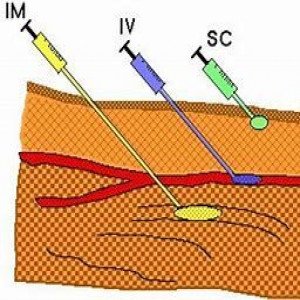 Welcome
Welcome
“May all be happy, may all be healed, may all be at peace and may no one ever suffer."
Renata Limited

Oxyton 5IU / ml

Generic for Diseases
- Abortion
- Facilitate lactation
- Induction and augmentation of labor
- Labour induction
- Postpartum and post-abortion bleeding
- Postpartum haemorrhage
- Uterine atony
The active substance of this preparation is synthetically prepared oxytocin, which is identical to the natural occurring hormone from the posterior pituitary gland. Oxytocin causes contractions of the uterus, thus mimicking contractions of normal, spontaneous labor and transiently impeding uterine blood flow. Amplitude and duration of uterine contractions are increased, leading to dilation and effacement of the cervix. Oxytocin also stimulates the smooth muscle associated with the secretory epithelium of the lactating breast causing ejection of milk out of the mammary ductular system but having no direct effect on milk secretion. Oxytocin has only minimal cardiovascular and antidiuretic properties. Therefore, it can safely be administered to patients in whom a (further) increase in blood pressure must be avoided, as in the case of hypertension, toxaemia, (pre-) eclampsia, solutio placentae and uraemia.
Pharmacology
Uterine motility depends on the formation of the contractile protein actomyosin under the influence of the Ca2+ dependent phosphorylating enzyme myosin light-chain kinase. Oxytocin promotes contractions by increasing the intracellular Ca2+, which in turn activates myosin's light chain kinase. Oxytocin has specific receptors in the muscle lining of the uterus and the receptor concentration increases greatly during pregnancy, reaching a maximum in early labor at term.
Oxytocin is indicated in-
- Induction of labor, stimulation of uterine contractions.
- Post delivery period, for the prevention or treatment of secondary haemorrhage and adherent placenta.
- To stimulate lactation, only it advised by the registered Gynaecologist/Physician.
- Treatment of incomplete abortion to obtain more rapid expulsion in order to prevent secondary hemorrhage.
Induction of labor, stimulation of uterine contractions: Oxytocin should be given by intravenous infusion under adequate control, 1-5 IU added to 500 ml of infusion fluid. The administration is started at 1 mU (1 mU=0.001 IU) per minute. According to the effect obtained the dosage can be doubled every 30-45 minutes until the uterus threshold has been attained. A further increase will then usually provide optimal activity. The threshold is generally below 10 mU per minute.
N.B.: Intramuscular administration of Oxytocin may lead to an irregular response and symptoms of overdosage. It intramuscular administration is nevertheless unavoidable, dosage should not exceed 0.5-1 IU per injection.
Post delivery period, for the prevention or treatment of secondary haemorrhage and adherent placenta: Intramuscular injection of 2-5 IU, or as intravenous infusion in an adequate dosage
To stimulate lactation, only it advised by the registered Gynaecologist/Physician: Intramuscular injection of 2 IU
Treatment of incomplete abortion to obtain more rapid expulsion in order to prevent secondary hemorrhage: Intramuscular injection of 2-5 IU every 30-60 minutes or as intravenous infusion in an adequate dosage
- Cephalo-pelvic disproportion.
- Abnormal position of the child or abnormal position of the skull.
- Overdistention of the inferior segment of the uterus.
- Severe toxaemia.
- Hypertonic uterine dysfunction.
- Foetal distress, where delivery is not imminent (uterine contractions may increase hypoxia).
- Cord presentation and prolapse.
- Total placenta previa.
- Vasa praevia.
- Hypersensitivity to the drug may result in uterine hypertonicity, spasm, titanic contraction or rupture of the uterus.
- The possibility of increased blood loss and afbrinigenemia should be kept in mind when administering the drug.
- Severe water intoxication with convulsions and coma has occurred.
- Oxytocin may occasionally cause nausea, vomiting, haemorrhage or cardiac arrhythmias, anaphylactic reaction.
Adverse reactions: Exceptionally, symptoms of water intoxication may occur. An increased incidence of icterus neonatorum has been reported after use of oxytocin.
Overdose Effects
Excess oxytocin may cause violent uterine contractions leading to fetal bradycardia and arrhythmias, extensive laceration of the soft tissues, uterine rupture and perhaps fetal or maternal death. Treatment consists of immediate discontinuation of the infusion and induction of tocolysis.
- Since uterine sensitivity to oxytocin may vary widely. Oxytocin should be used with care. The smallest effective dose must be determined for each patient and then utilized to initiate labor.
- Oxytocin should only be used when adequate medical supervision is provided. Fetal heart rate and maternal blood pressure should be determined.
- Oxytocin should be used with care if scars of the uterus and of the cervix uteri exist.
Pregnancy & Lactation
Pregnancy category C. It is not known whether Oxytocin is excreted in human milk
Oxyton 5IU / ml and more Available Brands
Rephaston 10mg
Xenapro Plus 500mg + 20...
Regain 5%
Orcef 100mg / 5m...
Calcin-DX 600mg + 40...
Mectin 12mg
Mazic Jr 4.05mg / 5...
Phenocept 500mg
...
To be happy, beautiful, healthy, wealthy, hale and long-lived stay with DM3S.